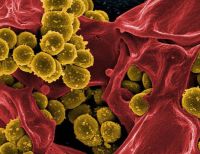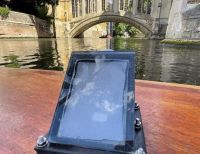A new analysis of ancient faeces found at the site of a prehistoric village near Stonehenge has uncovered evidence of the eggs of parasitic worms, suggesting the inhabitants feasted on the internal organs of cattle and fed leftovers to their dogs.
Durrington Walls was a Neolithic settlement situated just 2.8km from Stonehenge, and dating from around 2500 BC, when much of the famous stone monument was constructed. It is believed that the site housed the people who built Stonehenge.
A reconstruction of one of the Neolithic houses discovered at Durrington Walls, near Stonehenge.
A reconstruction of one of the Neolithic houses discovered at Durrington Walls, near Stonehenge.
A team of archaeologists led by the University of Cambridge investigated nineteen pieces of ancient faeces, or ‘coprolite’, found at Durrington Walls and preserved for over 4,500 years. Five of the coprolites (26%) – one human and four dog – were found to contain the eggs of parasitic worms.
Researchers say it is the earliest evidence for intestinal parasites in the UK where the host species that produced the faeces has also been identified. The findings are published today in the journal Parasitology.
“This is the first time intestinal parasites have been recovered from Neolithic Britain, and to find them in the environment of Stonehenge is really something,” said study lead author Dr Piers Mitchell from Cambridge’s Department of Archaeology.
“The type of parasites we find are compatible with previous evidence for winter feasting on animals during the building of Stonehenge,” he said.
Four of the coprolites, including the human one, contained the eggs of capillariid worms, identified in part by their lemon shape.
While the many types of capillariid around the world infect a wide range of animals, on the rare occasion that a European species infects humans the eggs get lodged in the liver and don’t appear in stool.
The evidence of capillariid eggs in human faeces indicates that the person had eaten the raw or undercooked lungs or liver from an already infected animal, resulting in the parasite’s eggs passing straight through the body.
















